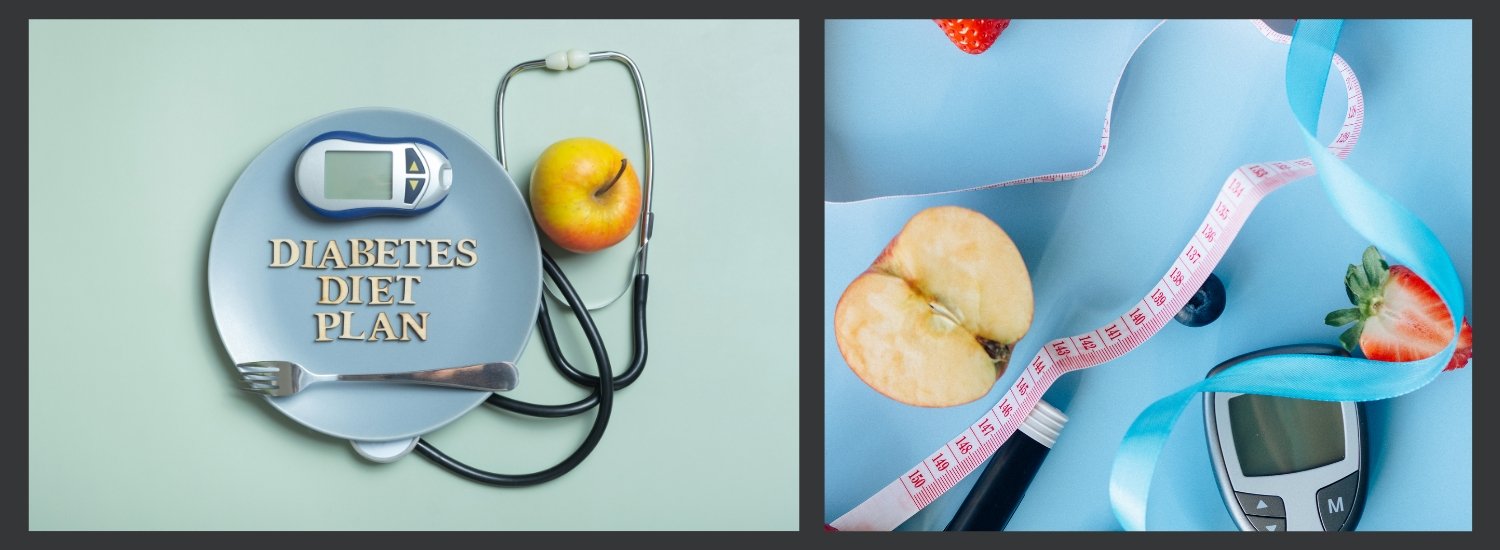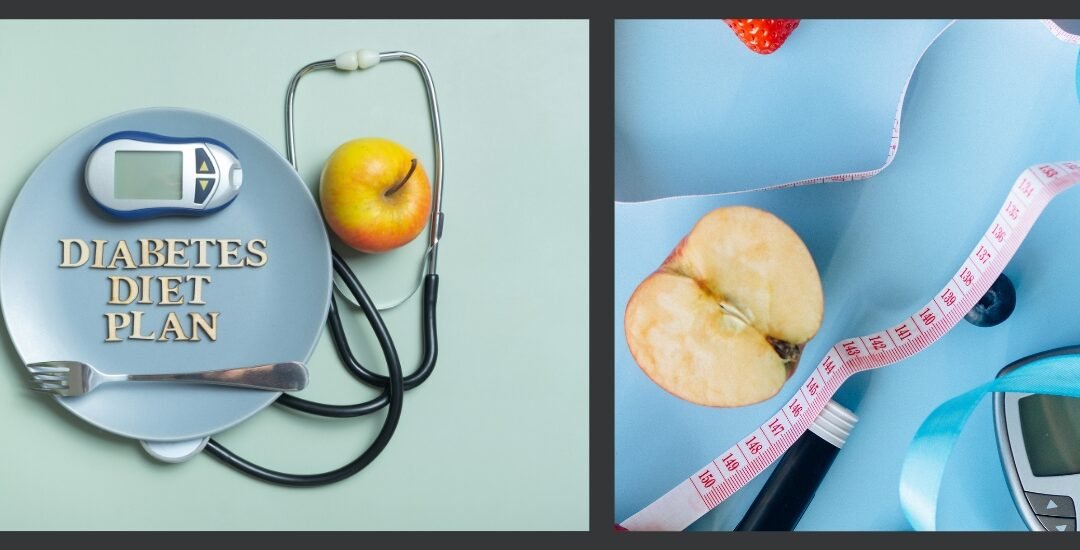Living with diabetes doesn’t mean giving up flavor or satisfaction in your meals. With the right approach, you can enjoy food while effectively managing your blood sugar levels. A well-balanced diabetes diet plan is a cornerstone of long-term diabetes control, helping you avoid complications and feel your best every day.
Whether you’ve just been diagnosed or you’re looking to improve your eating habits, this guide provides practical advice, easy meal ideas, and smart strategies tailored to your health goals.
Table of Contents
- Why Diet Matters for Diabetes
- What to Eat with Type 2 Diabetes
- Best Meal Plan for Diabetics: Daily Framework
- Healthy Foods for Diabetes: What to Add to Your Plate
- Understanding Glycemic Index Foods for Diabetes
- Portion Control for Diabetics
- Low-Carb Diet for Diabetics: Is It Right for You?
- Diabetes-Friendly Recipes & Meal Planning Tips
- Walk-In Clinic Diabetes Nutrition Support
- Call to Action
- Final Thoughts
1. Why Diet Matters for Diabetes
Your diet has a direct impact on your blood glucose levels. A structured diabetes diet plan helps keep your numbers within target range, boosts energy, and reduces the risk of complications like heart disease or nerve damage. It also supports weight management—an essential factor for those with type 2 diabetes.
2. What to Eat with Type 2 Diabetes
Focus on whole, unprocessed foods that provide steady energy without spiking blood sugar. This includes:
- Non-starchy vegetables (leafy greens, bell peppers, cucumbers)
- Whole grains (quinoa, brown rice, oats)
- Lean proteins (chicken, turkey, tofu, legumes)
- Healthy fats (olive oil, nuts, avocado)
- Low-glycemic fruits (berries, apples)
Limiting refined carbs and sugary drinks is essential for maintaining glucose balance.
3. Best Meal Plan for Diabetics: Daily Framework
Consistency is key. Aim for three balanced meals and 1–2 small snacks per day. A sample day might look like:
- Breakfast: Scrambled eggs with spinach and a slice of whole-grain toast
- Lunch: Grilled chicken salad with olive oil vinaigrette
- Snack: Apple slices with almond butter
- Dinner: Baked salmon, roasted vegetables, and quinoa
Stay hydrated, and avoid skipping meals, which can lead to spikes or dips in blood sugar.
4. Healthy Foods for Diabetes: What to Add to Your Plate
Add variety and color to ensure you’re getting essential nutrients:
- Fiber-rich foods like lentils and leafy greens slow sugar absorption
- Protein helps stabilize energy and preserve muscle
- Omega-3 fats (found in fatty fish like salmon) support heart health
These choices form the core of any effective balanced diet for diabetes management.
5. Understanding Glycemic Index Foods for Diabetes
The glycemic index (GI) ranks carbohydrates based on how they affect blood sugar.
- Low-GI foods (e.g., lentils, non-starchy veggies) are ideal for blood sugar control
- High-GI foods (e.g., white bread, sugary cereals) cause rapid spikes
Choosing mostly low to moderate GI foods can improve overall glucose stability.
6. Portion Control for Diabetics
Even healthy foods can raise blood sugar if eaten in excess. Portion awareness is crucial:
- Use the plate method: ½ non-starchy veggies, ¼ protein, ¼ whole grains
- Measure high-carb foods to prevent overeating
- Avoid eating directly from bags or containers
Portion control supports weight loss and steady glucose levels.
7. Low-Carb Diet for Diabetics: Is It Right for You?
A low-carb diet for diabetics can be effective for some individuals, particularly those who struggle with insulin resistance or weight gain. However, it’s important to include adequate fiber and nutrients, and avoid very restrictive plans without medical supervision. Regular monitoring of your blood sugar levels is also essential. Before making any significant dietary changes, it’s wise to consult with a healthcare provider to ensure it’s safe and suitable for your individual needs.
8. Diabetes-Friendly Recipes & Meal Planning Tips
Success starts in your kitchen. Keep it simple and sustainable. Batch cooking proteins and whole grains can save time during busy weekdays, while prepping grab-and-go veggie packs helps make healthier snacking easier. Swapping soda for infused water or herbal tea can cut added sugars without sacrificing enjoyment. To enhance flavor without raising glucose levels, opt for herbs and spices instead of sugary or high-sodium sauces. These diabetic meal planning tips make nutritious eating easier, more flavorful, and more enjoyable.
9. Walk-In Clinic Diabetes Nutrition Support
Need help creating a personalized diabetes diet plan? Our providers at Walk In PCP offer one-on-one support tailored to your needs. We guide patients with meal planning, weight loss goals, and navigating conditions like type 2 diabetes and obesity—no appointment needed.
10. Call to Action
If you’re feeling overwhelmed or unsure where to start, our team at Walk In PCP is here to help. Whether you’re newly diagnosed or need a refresh on your current plan, we offer personalized guidance to build a sustainable diabetes diet plan that fits your lifestyle. Walk in today—no appointment needed—and let our healthcare professionals support your journey to better health.
11. Final Thoughts
Managing diabetes through diet is one of the most empowering things you can do for your health. By making smart food choices and being consistent, you can control your blood sugar and live a full, active life.
Don’t go it alone. For expert advice and ongoing support, visit Walk In PCP. Our team is here to help you take control of your health, one meal at a time.
Disclaimer
This blog is for informational purposes only and does not replace professional medical advice, diagnosis, or treatment. Always consult your healthcare provider before making any changes to your diabetes care routine.

